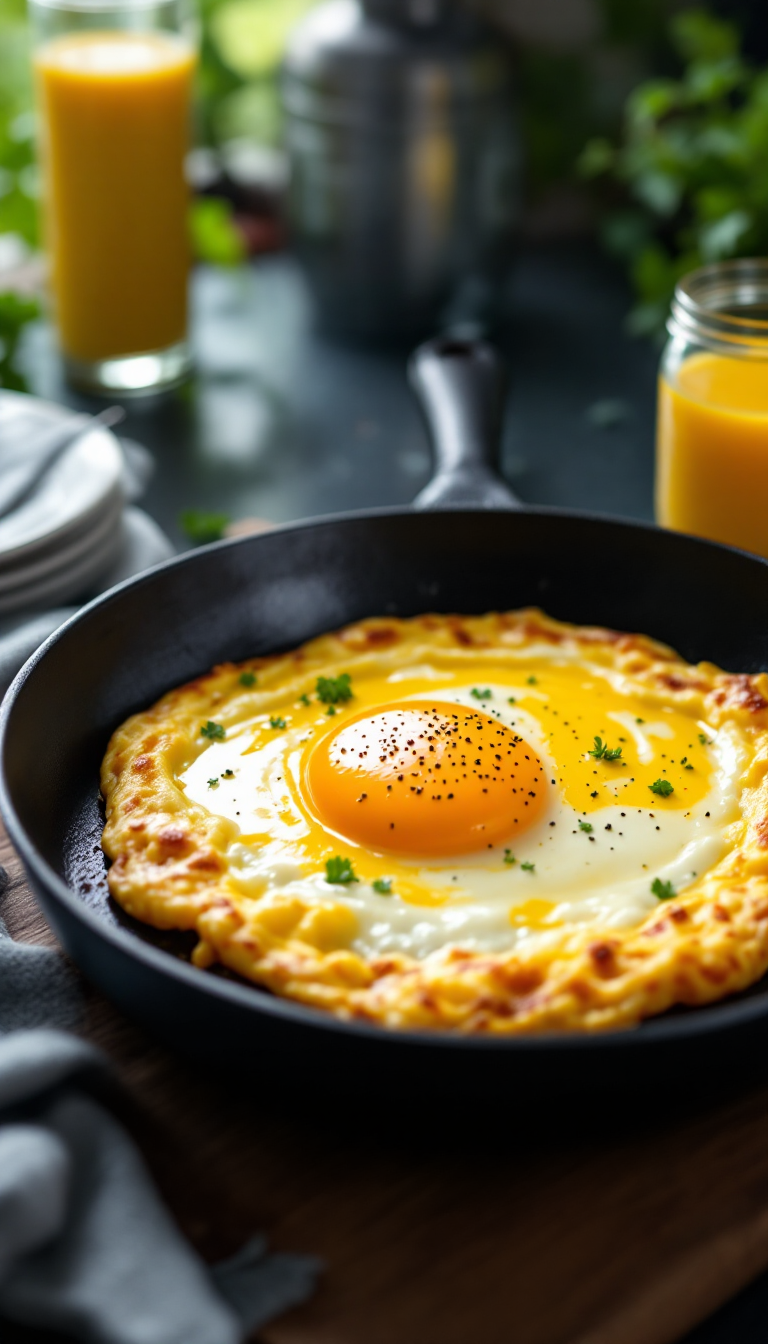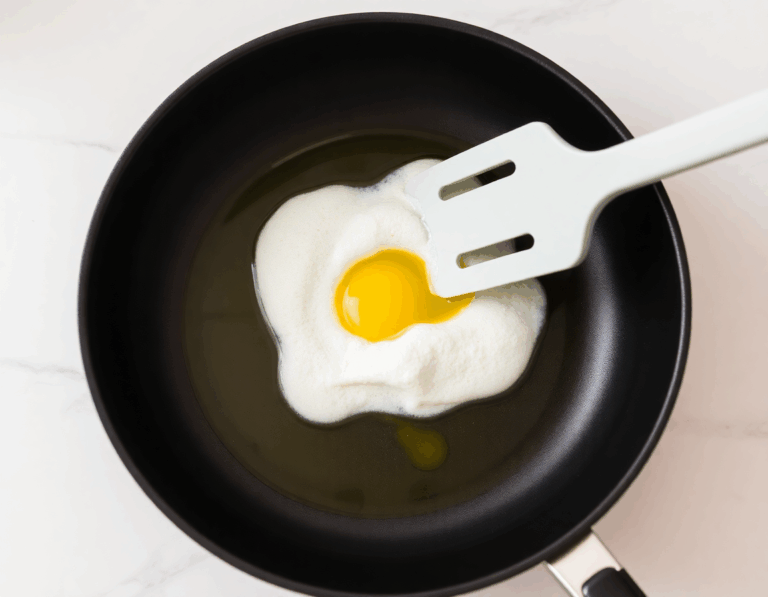
Ah, the omelet—a breakfast staple, yet somehow a culinary masterpiece in its own right. I remember the first time I tried to make one, it was more scrambled than anything else (oops). But with a few tricks up your sleeve, you can transform eggs into a fluffy, flavorful delight that’s perfect not just for breakfast, but anytime you’re hungry for something comforting and, dare I say, a bit fancy.
Steps
- In a medium bowl, whisk together eggs, salt, pepper, and herbs until the mixture is smooth and frothy. Allow the mixture to rest at room temperature for 10 to 15 minutes, during which the eggs will darken in color.
- Melt 1 tablespoon of butter in a 10-inch nonstick skillet over medium heat until it turns lightly browned. Add diced ham and cook for about 3 minutes until the edges start to brown. Combine the ham with grated cheese in a small bowl, then wipe the skillet clean.
- Place the skillet back on medium heat and melt the remaining tablespoon of butter until lightly browned. Re-whisk the eggs until foamy, pour into the skillet, and use a silicone spatula to push the edges toward the center as they set. Tilt the pan to let the uncooked egg run underneath, continuing this process until the omelette is nearly set, about 45 seconds.
- Scatter the ham and cheese mixture over half of the omelette. Remove the skillet from heat, cover, and let it sit for about 1 minute until the omelette reaches your desired consistency.
- Use a silicone spatula to gently loosen the edges of the omelette from the skillet, ensuring it is not sticking. Carefully fold the omelette in half, slide it onto a serving plate, and serve immediately.

Ingredients
- 4 or 5 large eggs
- Kosher salt
- Freshly ground black pepper
- Small bunch of chopped chives, tarragon, or parsley
- 2 tablespoons (25 g) unsalted butter, divided
- 4 ounces (110 g) diced ham steak
- 2 to 3 ounces (80 g) grated cheddar cheese
Nutritional Values
Calories: 996 | Fat: 76g | Saturated Fat: 38g | Cholesterol: 1112mg | Sodium: 2590mg | Carbohydrates: 4g | Dietary Fiber: 0g | Sugars: 2g | Protein: 72g | Vitamin C: 40mg | Calcium: 724mg | Iron: 6mg | Potassium: 788mg
FAQ
- When should I salt my eggs for the best omelette texture?
- It’s best to add salt to your eggs about 15 minutes before cooking. This allows the salt to break down the egg proteins, resulting in a tender texture and reducing the likelihood of liquid seeping from the omelette. Adding salt just before cooking will still give some benefits, but not as much as allowing it to rest.
- What is the key technique for making a fluffy diner-style omelette?
- The key technique is the “lift-and-tilt” method. Use a silicone spatula to lift the edges of the omelette and tilt the pan, allowing the uncooked egg to flow underneath. This helps set the eggs with minimal stirring and maintains large, fluffy curds.
- How can I ensure the cheese melts evenly in my omelette?
- Combine the cheese with hot ham before adding it to the omelette. This pre-melts the cheese slightly, ensuring it melts completely and evenly once inside the omelette.
- Why should the omelette be finished off-heat?
- Removing the skillet from the heat and covering it allows residual heat to gently finish cooking the omelette. This method keeps the omelette soft, moist, and prevents overcooking.
- What type of equipment is recommended for making this omelette?
- A 10-inch nonstick skillet and a silicone spatula are recommended. These tools help in easy maneuvering and flipping of the omelette without sticking.
Tips
- Allow the whisked eggs to rest with salt for about 15 minutes before cooking. This helps break down the protein structure, resulting in a more tender and moist omelette.
- Use the lift-and-tilt method to cook the eggs: gently lift the edges with a spatula and tilt the pan to let the uncooked eggs flow underneath. This technique helps set the eggs with minimal stirring, creating large, fluffy curds.
- Finish the omelette off the heat by adding your fillings, covering the skillet, and allowing the residual heat to cook the top. This keeps the omelette soft and prevents it from becoming dry.
- For even melting of the cheese, mix it with hot ham before adding it to the omelette. This gives the cheese a head start on melting, ensuring a perfectly gooey filling.
Equipment
- 10-inch nonstick skillet
- Silicone spatula
